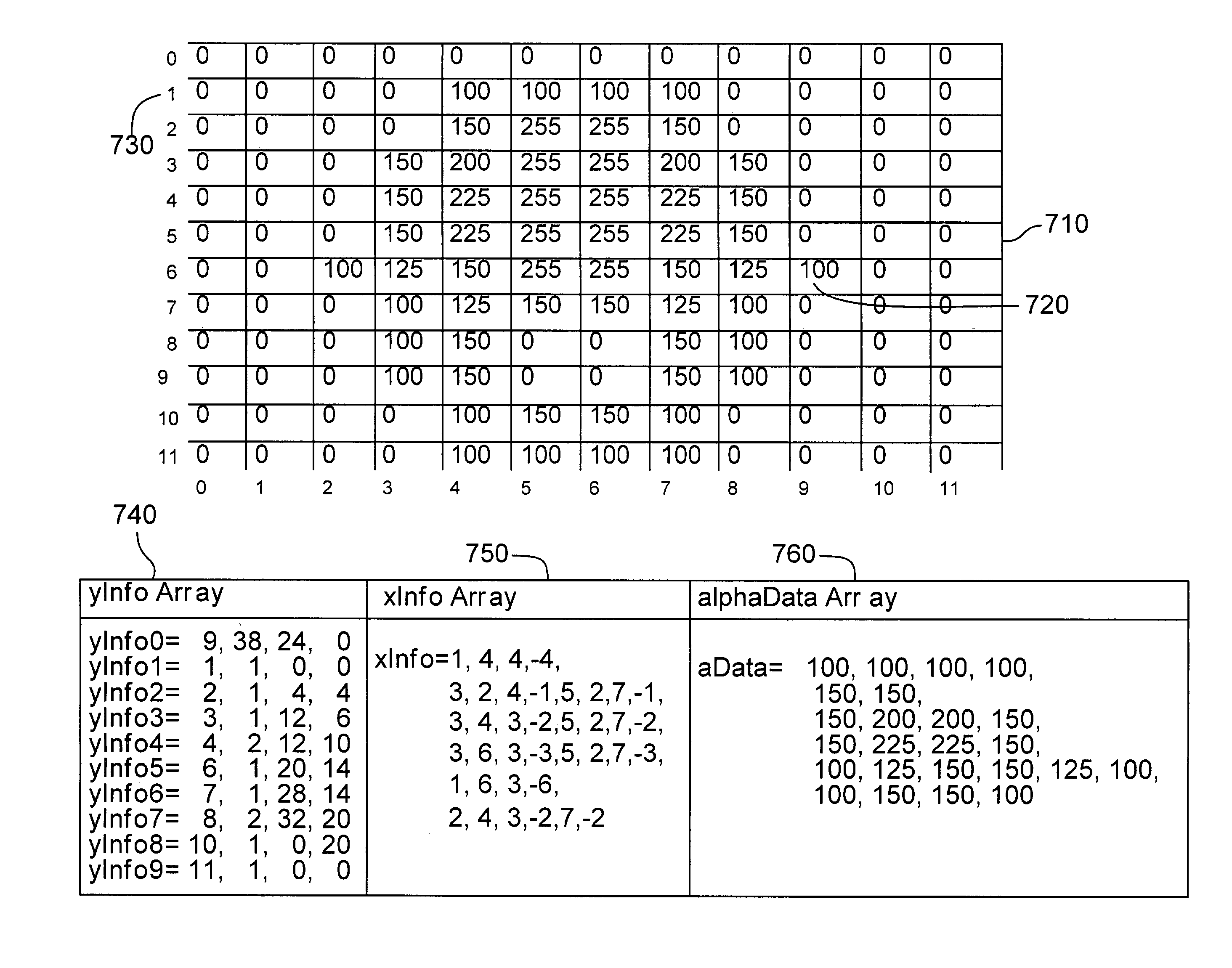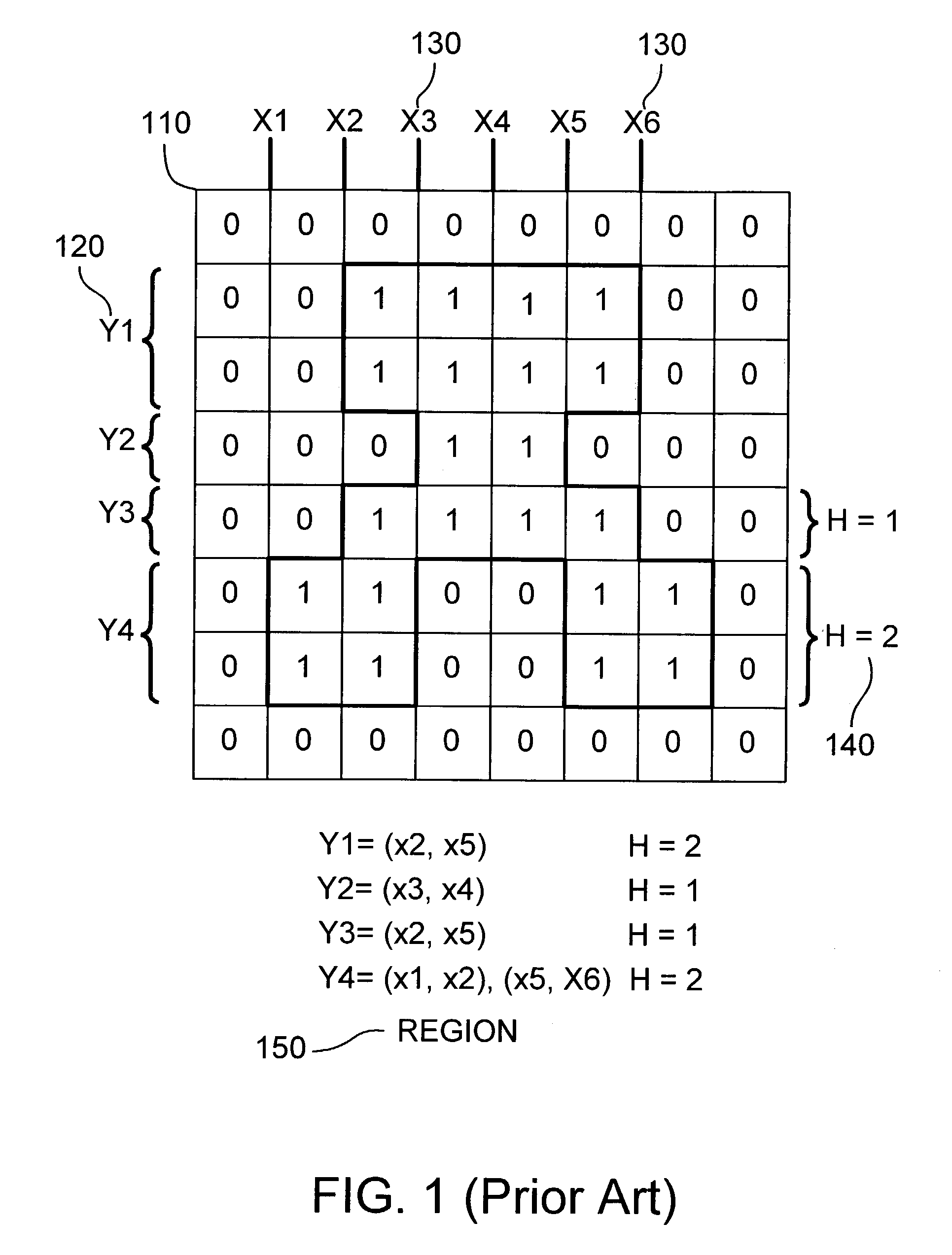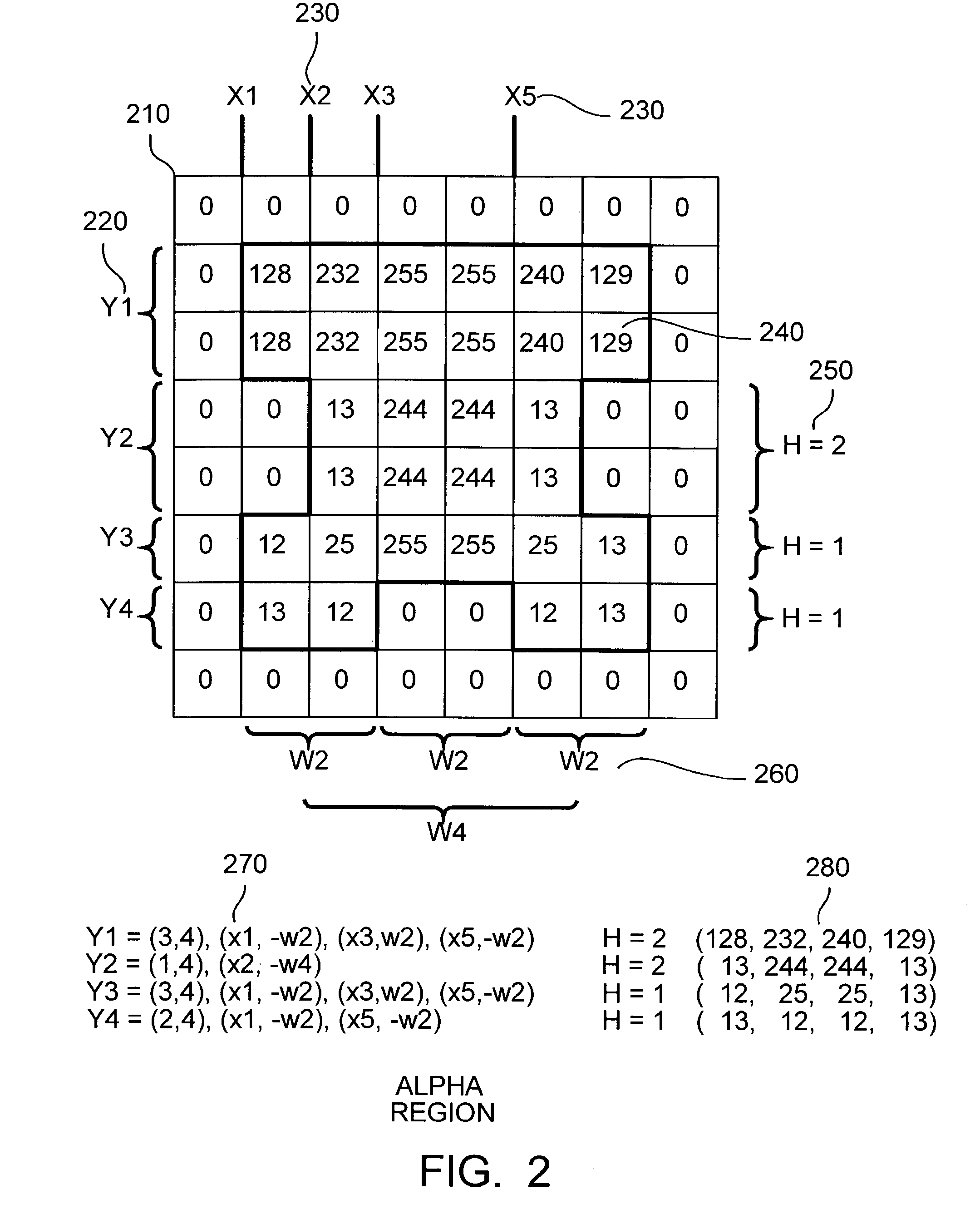Storing images having semi-transparent pixels via alpha regions
- Summary
- Abstract
- Description
- Claims
- Application Information
AI Technical Summary
Benefits of technology
Problems solved by technology
Method used
Image
Examples
example implementation
[0050]The following sections describe a specific implementations of a method of the present invention for storing and processing an arbitrary 2-dimensional shape in a graphics subsystem that supports anti-aliasing in more detail.
Constructing An AlphaRegion From Sources Without Alpha Values
[0051]There are several approaches to constructing an instance of an AlphaRegion. With reference to FIG. 3A, the first approach is to construct an AlphaRegion A (330) directly from various primitive shapes, including a rectangle, ellipse, polygon, or path, (310) using the methods (320) supplied in the AlphaRegion class itself.
[0052]In the case of a polygon (a special case of a path) or path, an implementation of AlphaRegion can render the image of a combination of paths in either of two different fill modes that are known in the art: alternate mode or winding mode. For example, with reference to FIG. 3B, when two intersecting rectangles are rendered in alternate mode, the image of the resulting com...
PUM
 Login to View More
Login to View More Abstract
Description
Claims
Application Information
 Login to View More
Login to View More - R&D
- Intellectual Property
- Life Sciences
- Materials
- Tech Scout
- Unparalleled Data Quality
- Higher Quality Content
- 60% Fewer Hallucinations
Browse by: Latest US Patents, China's latest patents, Technical Efficacy Thesaurus, Application Domain, Technology Topic, Popular Technical Reports.
© 2025 PatSnap. All rights reserved.Legal|Privacy policy|Modern Slavery Act Transparency Statement|Sitemap|About US| Contact US: help@patsnap.com



